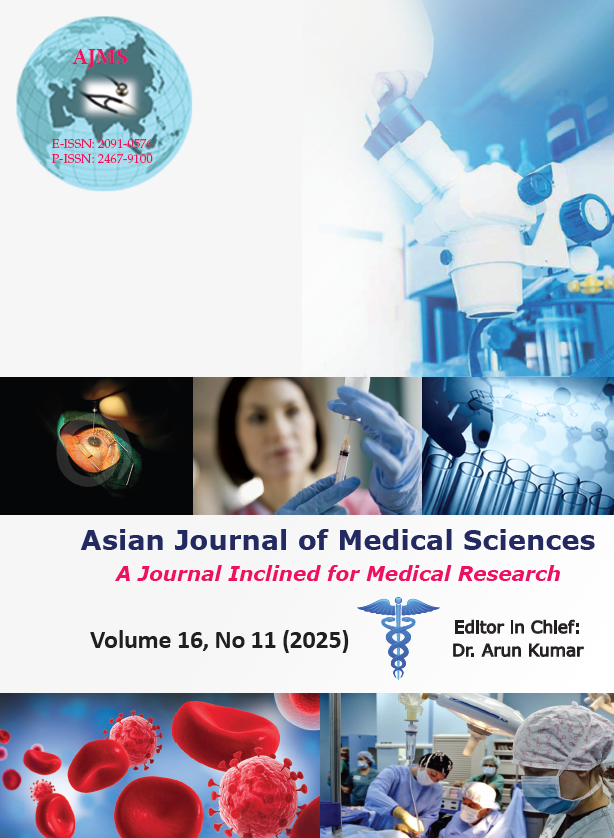Examining the association of menarche and correlates in a rural polycystic ovary syndrome population: A cross-sectional study
DOI:
https://doi.org/10.71152/ajms.v16i11.4883Keywords:
Polycystic ovary syndrome; Menarche; Menstrual cycle; Oligomenorrhea; Rural population; Adolescent; Young adult; Female; Cross-sectional studies; Surveys and questionnaires; Body mass index; Obesity; Insulin resistance; Hyperandrogenism; Socioeconomic factors; Lifestyle; Hormones; BiomarkersAbstract
Background: Polycystic Ovary Syndrome (PCOS) is a prevalent endocrine disorder with larger metabolic and reproductive implications. Age at menarche is a potential marker for PCOS risk and linked to hyperandrogenism; seemingly relationship with clinical, hormonal, and metabolic features remains complicated and under-researched in rural populations.
Aims and Objectives: Our study aimed to examine the relationship of age at menarche and the clinical, hormonal, and metabolic features of PCOS patients in the rural population. The objectives were to divide participants by menarche age, compare their clinical, hormonal, and biochemical profiles, and assess their relationship with age at menarche.
Materials and Methods: This study was cross-sectional in nature, conducted at a rural tertiary care hospital from January to June 2025. Sixty-eight women diagnosed with PCOS by Rotterdam criteria were enrolled. Participants were classified into early (<11 years), normal (12-14 years), and late (>15 years) menarche groups. Sociodemographic variables, clinical features, and hormonal assays were collected and analyzed using SPSS.
Results: The Mean age of our participants was ~23 years, predominantly from rural backgrounds. No significant variations were found in baseline characteristics, hormonal levels (Testosterone, Anti-Müllerian Hormone, Luteinizing Hormone: Follicle-Stimulating Hormone ratio), or metabolic markers through menarche groups, as all were P>0.05. The early menarche group had a significantly higher Ferriman-Gallwey score (10.6±4.7, P=0.038). Correlation analysis had a significant, but weak, negative association between menarche age and hirsutism (r = −0.22, P=0.044).
Conclusion: In this rural population of PCOS patients, age at menarche was not related to significant variations in baseline hormonal or metabolic profile. Early menarche was linked to hirsutism, paving the way for it may serve as a simple, non-invasive clinical indicator for identifying PCOS patients at higher risk for hyperandrogenism.
Downloads
Downloads
Published
How to Cite
Issue
Section
License
Copyright (c) 2025 Asian Journal of Medical Sciences

This work is licensed under a Creative Commons Attribution-NonCommercial-NoDerivatives 4.0 International License.
Authors who publish with this journal agree to the following terms:
- The journal holds copyright and publishes the work under a Creative Commons CC-BY-NC license that permits use, distribution and reprduction in any medium, provided the original work is properly cited and is not used for commercial purposes. The journal should be recognised as the original publisher of this work.
- Authors are able to enter into separate, additional contractual arrangements for the non-exclusive distribution of the journal's published version of the work (e.g., post it to an institutional repository or publish it in a book), with an acknowledgement of its initial publication in this journal.
- Authors are permitted and encouraged to post their work online (e.g., in institutional repositories or on their website) prior to and during the submission process, as it can lead to productive exchanges, as well as earlier and greater citation of published work (See The Effect of Open Access).





